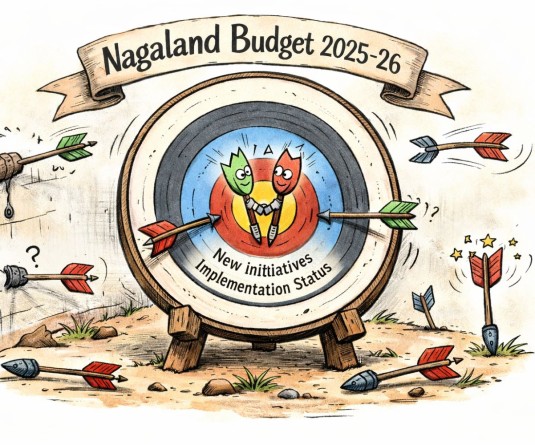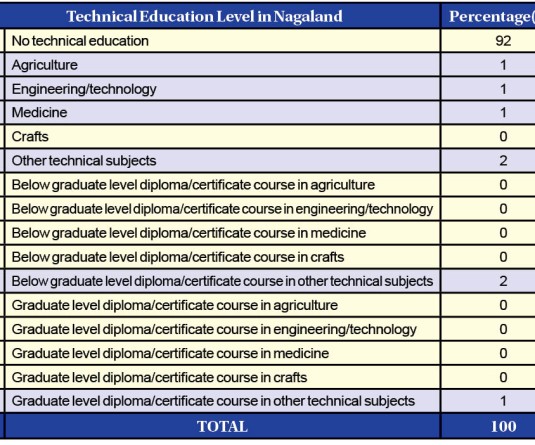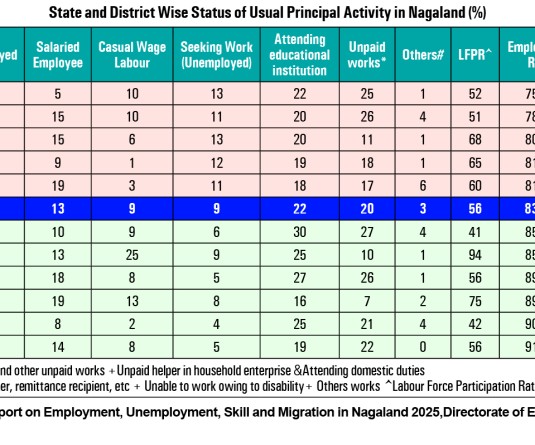The policy applies only to those appointed on or before 6 June 2016, who shall now be recognised as ‘casual employees’ and be eligible for the schemes and provisions notified under the Nagaland Work-Charged and Casual Employees Regulation Act, 2001.

All appointed on or before 6 June 2016 come under the Nagaland Work-Charged and Casual Employees Regulation Act
Morung Express News
Dimapur | May 26
In what may be seen as a significant step towards streamlining engagement, remuneration, and service conditions of contingency, fixed, and wage-paid employees, the Government of Nagaland has notified their inclusion as ‘Casual Employees’ under the Nagaland Work-Charged and Casual Employees Regulation Act, 2001 (NWCERA 2001).
However, the policy applies only to those appointed on or before 6 June 2016, who shall now be recognised as ‘casual employees’ and be eligible for the schemes and provisions notified under the NWCERA 2001.
An Office Memorandum (OM) issued by the Department of Personnel & Administrative Reforms (DP&AR), Nagaland, on March 5 stated that the designation was made under the powers conferred by sub-sections 4(b) and (c) of Chapter III of the NWCERA 2001, and a Cabinet decision conveyed on February 25.
A verification of such employees will be conducted as per the directions of the Work-Charged and Casual Employees Commission (WCEC) and those verified would be eligible for regularisation under Clause 1(i) and (iii) of the ‘Scheme for Regularisation and Absorption of Work-Charged and Casual Employees and Revision of Wages,’ notified on 17 March 2015, it added.
Among other, as per the March 17, 2015 OM, all existing work-charged and casual employees currently receiving scale pay and have completed 30 years or more of continuous service as of January 1, 2015, are be eligible for regularisation. It also laid certain terms and conditions were also laid done for such conversion.
Who are 'casual' and 'work-charged' employees?
As per the NWCERA 2001, a 'Casual employee' is an employee engaged without sanctioned post while a 'Work-charged employees' is an employee engaged without sanctioned post under a work-charged establishment.
Further, a ‘work-charged establishment’ is defined as “such establishment in any department under which a person is employed upon the actual execution, as distinct from the general supervision, of a specific work or of sub-works of a specific project or upon the subordinate supervision of department labour, stores and machinery in connection with such work or sub-works.”
In other words, these employees are engaged in the actual implementation or oversight of government projects rather than general administrative supervision.
The Act also provides for the constitution of the WCEC to exercise powers and perform functions conferred under the Act.
Among other responsibilities, the Commission is mandated to recommend wage structures and conditions of service.
Conversion to 2015 ROP
In a separate OM dated March 5, the DPAR stated that all verified work-charged and casual employees cleared by the District Level Verification Committee and registered in PIMS ((Personal Information Management System), will be granted pay as per the 2015 ROP, effective April 1, 2025.
The move was based on recommendations of the WCEC and the February 25 Cabinet’s memo.
Accordingly, all departments employing Work-Charged, Operation and Maintenance Staff, and Casual Employees were directed to expedite the conversion.
Responses to legal challenges?
The issue of remuneration, regularisation, and service conditions of contingency, fixed, wage-paid, work-charged, and casual employees has long been a matter of legal contention in Nagaland.
A large number of cases have already been disposed of, while several are currently pending before the Gauhati High Court, Kohima Bench (GHCKB), relating to this matter.
A key document frequently cited in Court is the OM dated March 17, 2015, which incidentally, was also issued following a High Court judgment and committee recommendation.
The OM was intended to streamline policy for regularisation and absorption, but court proceedings have highlighted inconsistent implementation by the State Government.
Nevertheless, the Court has repeatedly upheld the “Equal Pay for Equal Work” principle and flagged the Government’s inconsistent approach as a cause of concern.
In June 2024, the State Government informed the Court that it had constituted a committee on 16 February 2024 to explore solutions and recommend a policy for regulating the remuneration and terms of service of contingency and fixed-pay employees. The committee submitted its report in September 2024.
The 5 March 2025 OM appears to be a follow-up step in that direction. However, it does not resolve ongoing concerns regarding the inconsistent absorption into regular service, nor does it clarify the status of those appointed after June 6, 2016.
On paper, however, those appointed after the June 6, 2016 are considered “illegal” as the Nagaland Government officially ‘notified’ the ‘Ban on Appointment on Contract Basis’ on that day.
Moreover, the NWCERA 2001 remains ambiguous regarding absorption. It merely states that the State Government may draw up a scheme to absorb work-charged and casual employees into regular service-without clear provision.
Despite issuing new directives, the Government appears to have conveniently opened yet another route for temporary appointments. A fresh OM dated May 2, 2025, titled “Policy for Engagement of Short-Term Workers,” lays out the procedure for hiring temporary staff—purportedly based on the Cabinet decision conveyed on February 25. How this will play out in the long run remains anyone’s guess.
This is last of a two-part series.






